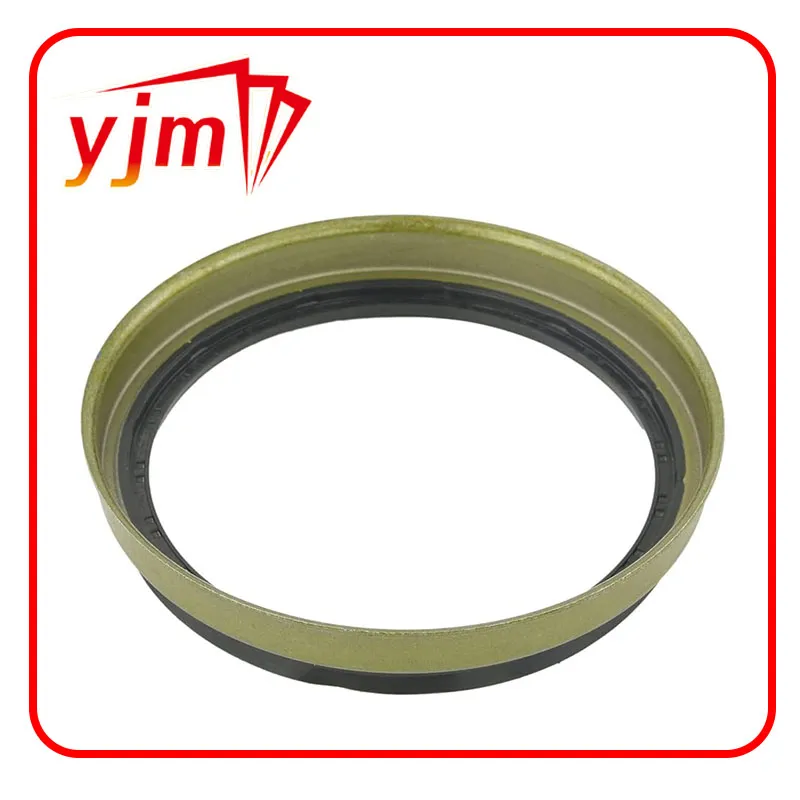Effective Solutions for Transmission Lip Seal Performance and Maintenance
Understanding Transmission Lip Seals Importance, Function, and Maintenance
Transmission lip seals, also known as lip seals or oil seals, are critical components in many mechanical systems, particularly in automotive and industrial applications. Their primary role is to retain lubricant and prevent the ingress of contaminants into the transmission, ensuring optimal performance and longevity of the system. This article will delve into the importance, function, and maintenance of transmission lip seals.
The Importance of Transmission Lip Seals
Transmission lip seals are integral to maintaining the efficiency of a vehicle’s transmission system. They are typically positioned at various junctions, such as where the driveshaft exits the transmission or where the transmission connects to the engine. By creating a tight seal, they prevent fluid leaks, which can lead to inadequate lubrication and ultimately, severe transmission damage.
Moreover, lip seals protect internal components from dirt, dust, and debris, which could otherwise cause wear and tear or even catastrophic failure. The integrity of these seals is crucial not just for optimal operation but also for extending the overall lifespan of the transmission, making them a vital consideration in vehicle maintenance.
Function of Transmission Lip Seals
The design of transmission lip seals is unique, featuring a flexible lip that conforms to the surface it seals against
. This flexibility allows the lip to maintain contact with the surface despite any slight movements or vibrations that may occur during operation. This contact is essential for preventing fluid leaks and barring contaminants.When the transmission operates, the internal pressure can affect the performance of seals. However, well-designed lip seals can withstand these pressures while effectively sealing the connections. The materials used for these seals must be resistant to various fluids, including oil and transmission fluid, as well as capable of withstanding temperature variations that can occur during operation.
Common Issues and Signs of Wear
transmission lip seal

Over time, transmission lip seals can wear out or fail due to several factors. Environmental conditions, exposure to heat, and the characteristics of the transmission fluid can all impact the lifespan of these seals. Common signs of a failing lip seal include fluid leaks under the vehicle, unusual noises during operation, or a noticeable decrease in transmission performance.
Drivers may first notice fluid leaks around the transmission area, which could indicate a failing seal. If left unaddressed, these leaks can lead to significant problems, including slippage and improper shifting, ultimately jeopardizing the vehicle's performance and safety.
Maintenance and Replacement
Regular maintenance is essential for prolonging the life of transmission lip seals. Inspections during routine vehicle maintenance can identify potential issues before they escalate. Mechanics often recommend regular checks of the transmission fluid levels and quality, as well as monitoring for any visible leaks.
If a lip seal failure is detected, it’s crucial to replace it promptly. The process typically involves removing the driveshaft or transmission to access the seal. Proper installation is key; a poorly fitted seal can lead to further leaks or premature failure.
When replacing lip seals, it is important to use quality parts that meet or exceed OEM specifications. Low-quality seals may save money initially but can lead to greater expenses down the line due to premature wear or failure.
Conclusion
Transmission lip seals might be small components, but their impact on the overall function of a vehicle's transmission system is significant. They are essential for fluid retention, protection against contaminants, and ensuring that the transmission operates smoothly. Regular maintenance and early detection of issues can help prevent costly repairs and extend the life of the transmission. Understanding the importance and function of these seals empowers vehicle owners to take proactive steps in maintaining their vehicles, ensuring reliable performance for years to come.
-
Simplifying Oil Changes: A Comprehensive Guide to Oil Drain Plugs and Their Variants
News Aug.04,2025
-
Mastering Oil Drain Maintenance: Solutions for Stripped, Worn, and Upgraded Oil Plugs
News Aug.04,2025
-
Fixing Oil Pan Plug Issues: Leaks, Stripped Nuts, and the Right Replacement Solutions
News Aug.04,2025
-
Everything You Need to Know About Oil Drain Plugs: Sizes, Fixes, and Upgrades
News Aug.04,2025
-
Choosing the Right Oil Drain Plug: A Guide to Sizes, Materials, and Drain Innovations
News Aug.04,2025
-
A Complete Guide to Automotive Drain Plugs: Types, Problems, and Innovative Solutions
News Aug.04,2025
-
The Ultimate Guide to Car Repair Kits: Tools and Essentials Every Driver Should Own
News Aug.01,2025
Products categories















